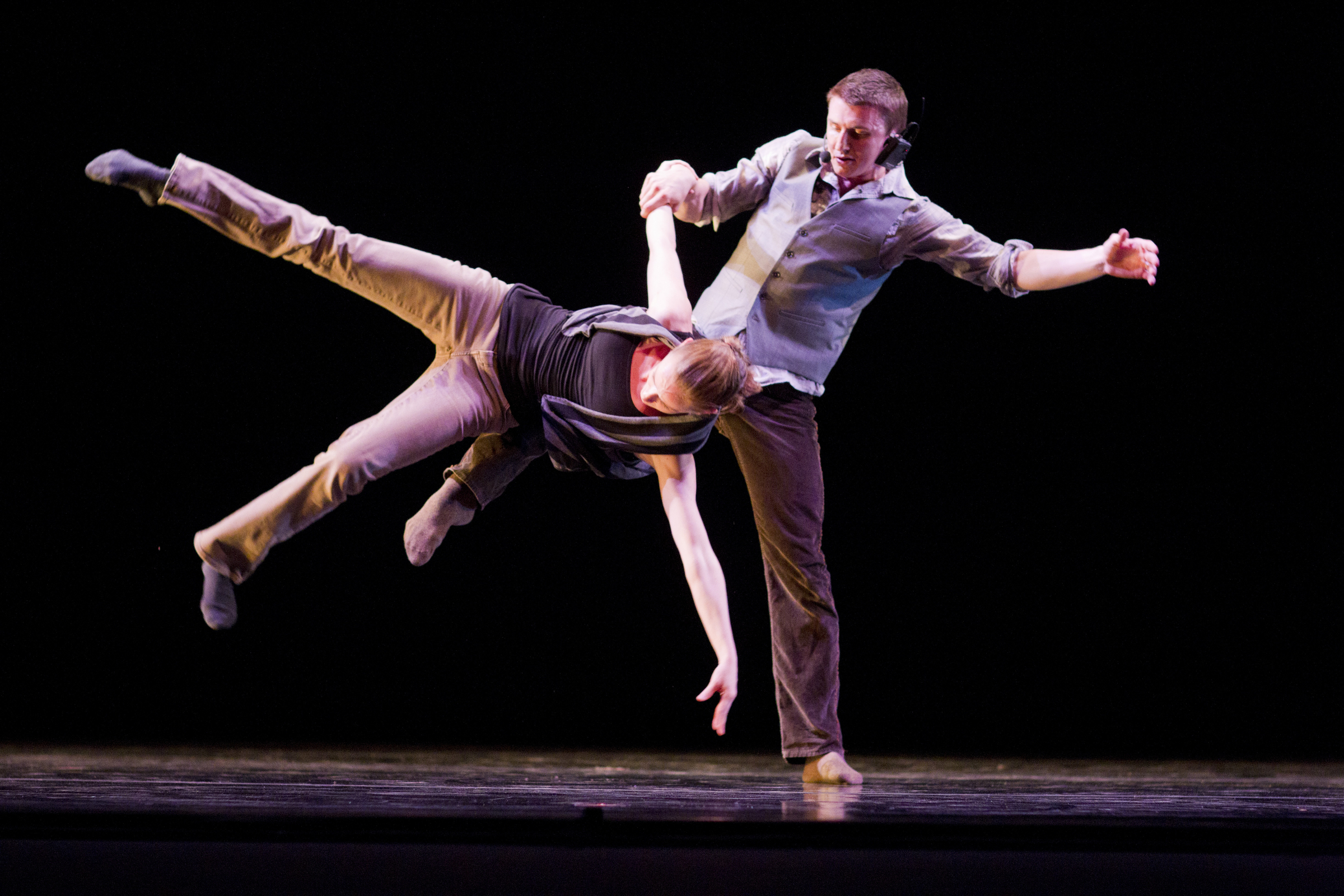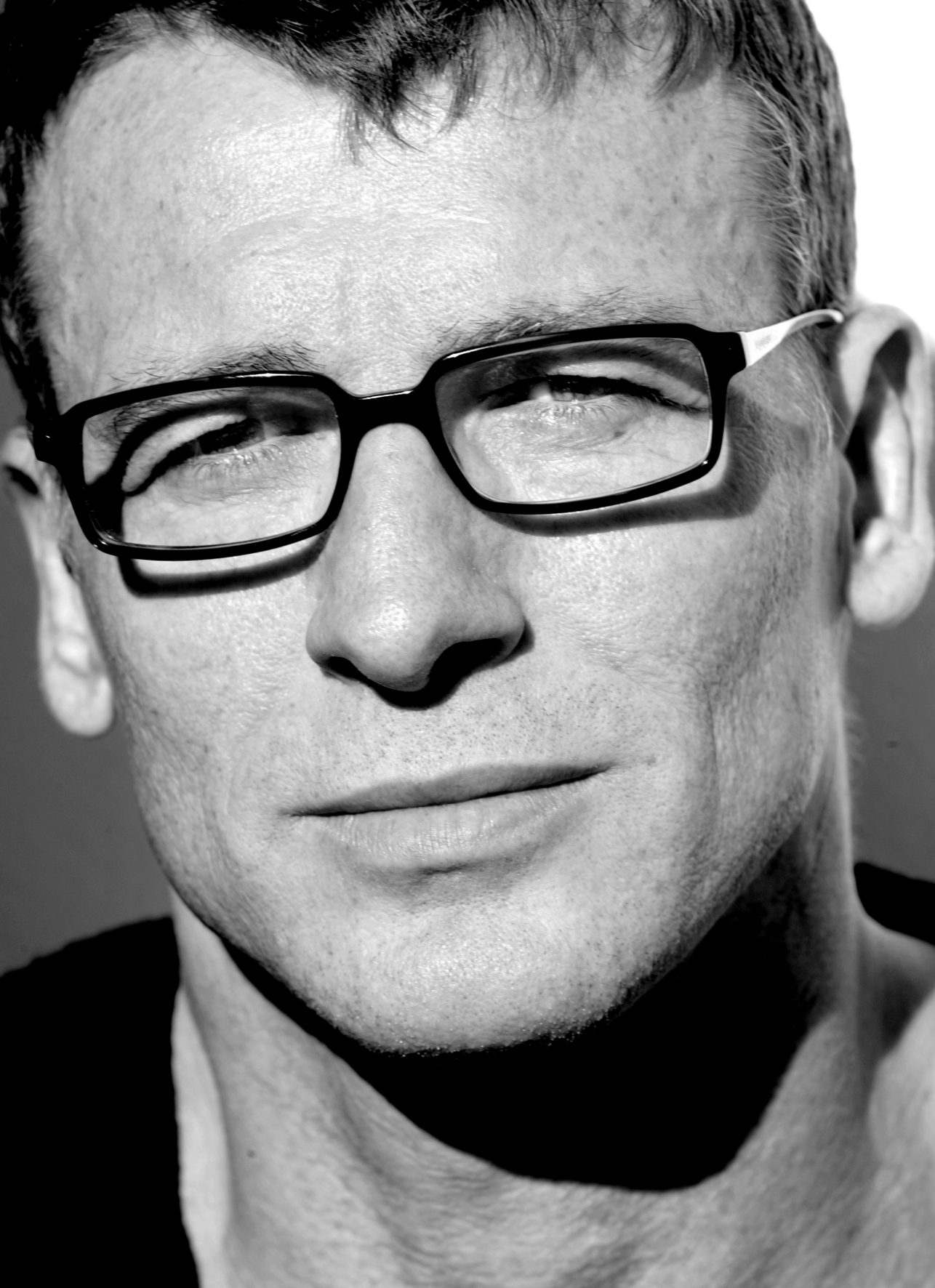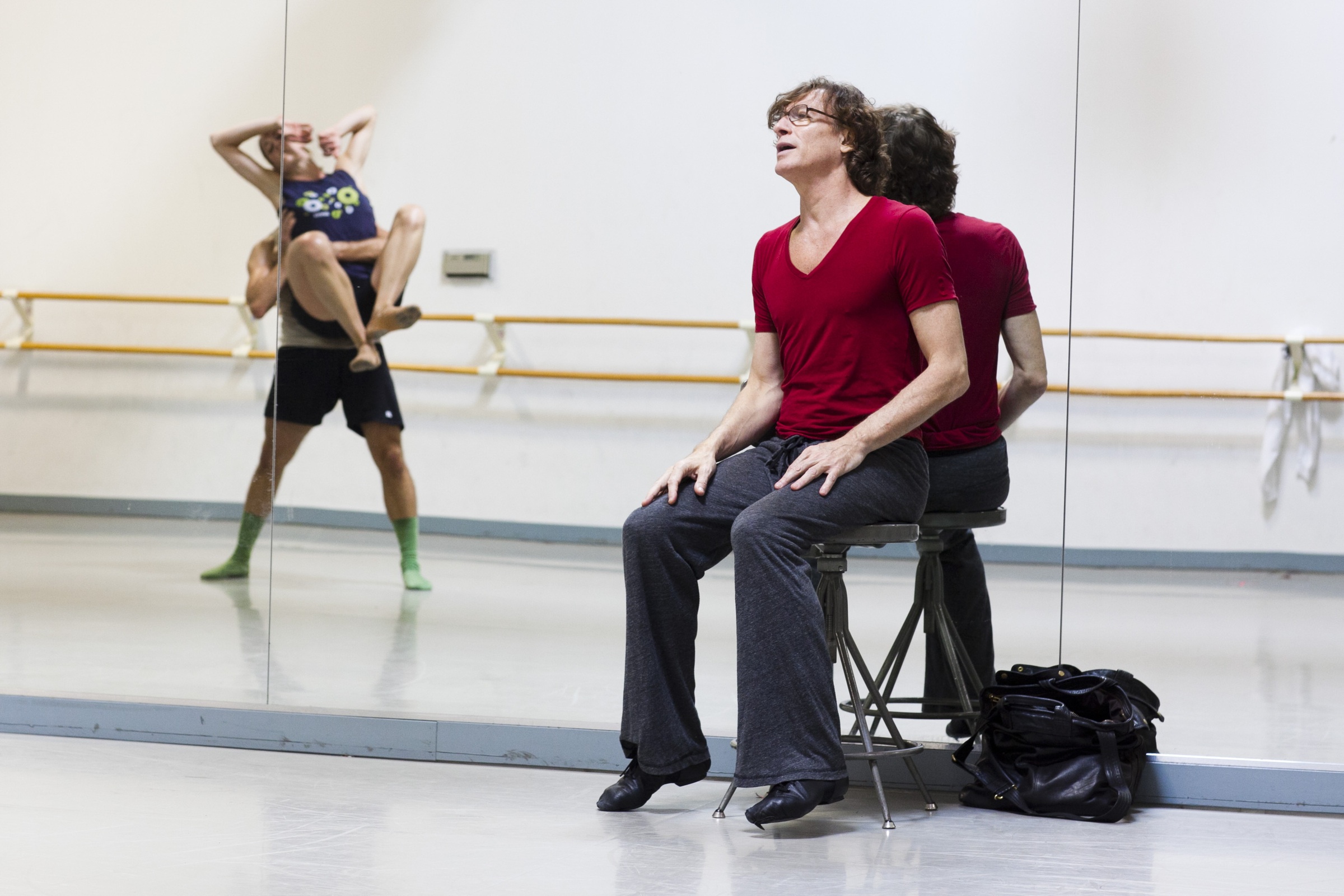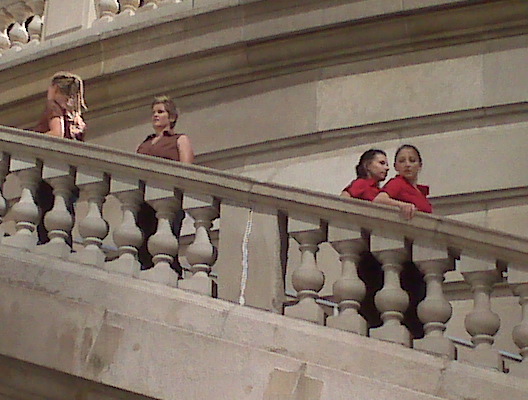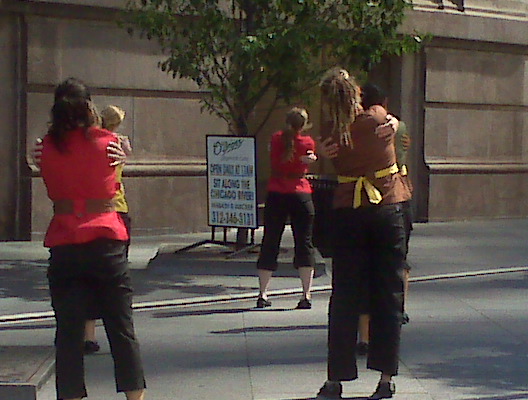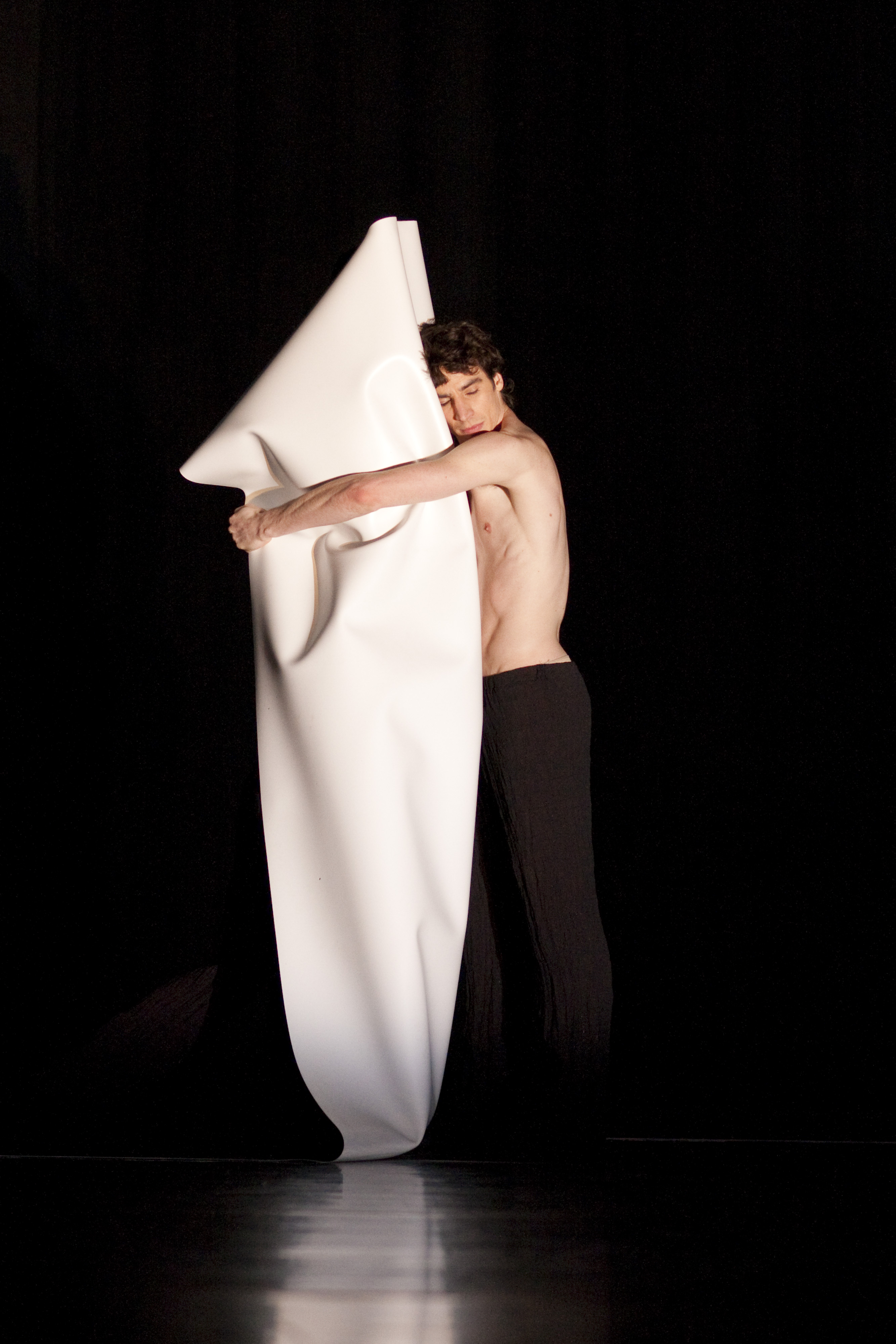
Cerrudo in Jiri Kylian's 27'52"
“He’s like a silky paintbrush that has been dipped in black ink and then swept, free-form, across a white page.” – Hedy Weiss, Dance Magazine, October 2007
Since moving to Chicago in 2005, Alejandro Cerrudo has amassed quite a fan base. After three years dancing with Nederlands Dans Theater II (NDT II), he did not make it into the main company and decided to move overseas to join Hubbard Street Dance Company (HSDC). NDT’s loss was our gain. “I think Hubbard Street is, if not the most important dance company in the United States, then it’s up there,” Cerrudo says on a quick break before rehearsal. “It really called to me…the chance to take part in expanding it even further as a dancer. I wanted to be part of that growth. I’m very happy I came.” Now, not only a dancer you can’t take your eyes off of, Cerrudo has emerged as quite a brilliant choreographer. As HSDC’s resident choreographer he creates original works each season for the main company and HSDC II. This summer he also set pieces on a company in Ausburg, Germany and at NDT II. Whether standing out in HSDC rep pieces like Bardo, 27′, 52″ and Untouched, creating audience favorites like Lickety Split and Extremely Close or flashing his shy, but disarming smile, Cerrudo definitely has Chicago’s attention.
Thursday ( September 30th) will be the long-awaited theatrical premiere of Deep Down Dos, a new work by Cerrudo. Originally slated to premiere last June as part of HSDC’s Spring Series, Dos was replaced at the last minute due to a music rights issue. Now, some four months later, we get a chance to see his latest offering — a work for nine dancers set to the Mason Bates (CSO’s Mead Composer) score Music from Underground Spaces, plus a new companion piece for four women entitled Blanco.
RB sat down with the oh-so-charming Spaniard back in May to talk about the upcoming premiere, his process and what he does for fun.
RB: Can you tell me a little bit about your choreographic process? Do you approach each piece differently?
AC: I like to always start from a different perspective. I tend to start with the music. The music – it triggers the inspiration. But, that doesn’t mean the process is the same in each work. I haven’t found a formula yet. I don’t know if anyone has a formula, but I don’t have one and I don’t want to have one. I think that keeps your work always open to something new. I think if you use always the same formula, you’ll repeat yourself or say the same thing with other words, but the end product will be always the same. I try to take a lot from the dancers. I try, it’s not always as I expect. Also, something that interests me very much is creating in the studio. I think that influences what comes out very, very much. Because if the dancer feels comfortable and engaged, the dancer is going to give more and it’s going to go faster too. And the dancers, particularly here at Hubbard Street, we have such great, talented dancers, that in so many cases, what I imagine in my head they can surpass that and make it so much better.
RB: And they know you, so they know how you move and they can anticipate what you’re thinking.
AC: More and more. That’s a great thing about being the resident choreographer. I get to know them and they get to know me, so we don’t start from zero.
RB: You still have a strong relationship with NDT. Jim Vincent and Glenn Edgerton have flip-flopped with HSDC and NDT and you’re leaving soon to set a piece on NDT II. Does that relationship influence your work?
AC: I don’t think that really influences my choreography, but it’s just funny. It feels great that such a company like NDT, that I have someone there that has supported me so much. I think there are so many talented choreographers out there, but it’s so hard to get the first chance. And even harder to get the second one, because when you’re starting as a choreographer, you’re judged by what people see – you’re first work. One cannot always create great work, so if your first work happens to be one the audience doesn’t like or the director doesn’t like, you might be done. Jim gave me the first opportunity to choreograph and he gave me a second chance, then a third. It’s great. And to feel like Glenn coming from NDT, he also supports me. NDT has such a high standard, as well as Hubbard Street, both directors…having them support me that feels good.
RB: The collaboration with Mason (Bates), how did that come about?
AC: I don’t think, and probably Mason would agree, it wasn’t really a collaboration. It was a collaboration with the CSO, but not with Mason. I was proposed to work with Mason Bates’ music and they showed me a few compositions of his and I picked one, so the music was already done. But I did talk to him a lot about his ideas and his inspiration for the piece. I even talked to him a little bit about the way I worked. We spoke a lot, but what he was trying to say with the music…I wasn’t trying to tell the same story with the dance. Of course, if I have the composer here, I want to hear all he has to say about his work. I think it came out very well and even though the music tried to say one thing and I was trying to say another thing, both things, the music and the dance said one story together. *Cerrudo-Bates interview here!
RB: Why did you pick that particular piece of music (Music from Underground Spaces)?
AC: It’s hard to tell…this happens to me all the time with art. Why do I like one piece of art or another? It’s not always clear. It’s just you like it or you love it.
RB: Did you immediately imagine movement?
AC: No. No. I was particularly touched and I really liked the last section of the piece. That’s probably one thing I was really driven to, but it was a little scary because it’s not necessarily music that I would pick naturally, but it was a great thing that happened because it pushed me to a new challenge. I think it has made me grow as a choreographer a lot. To face something that is not whatever you want. I’m very happy. I was a little scared at the beginning, but it came out very well.
RB: Can you describe your style? What’s the Cerrudo style?
AC: I don’t want to limit myself to say “this is my style”. I don’t have a formula. I want to be a choreographer that will always be surprising you. So if you can define me too well – you know what you’re going to see. The only thing that I want you to know that you’re going to see is the unexpected.
RB: If you could only do one, would you want to dance or choreograph?
AC: There’s a time for everything and I’m in transition. I’m sure eventually I’ll stop dancing. I like both; they’re very different. They demand very, very different things and the pressure is very, very different.

Cerrudo watching rehearsal from the audience.
RB: What inspires you? Where do you find inspiration?
AC: I think inspiration comes from everywhere and from nowhere. It depends on how lucky you are. I can find inspiration in this conversation that we’re having right now.
RB: Probably not.
AC: But that’ it. You can find inspiration in things that are really not that important and things that are really important…it’s not about that. It’s just something that clicks and inspires you. Of course, the dancers are something in front of you and they are people that have so much to say with their movement. Sometimes it just doesn’t come and I don’t know what to do. But I believe very much that creativity creates creativity. So many times when I’m blocked, I ask the dancers to just move – do something, and that inspires me to do something else. Maybe stillness is something that doesn’t inspire me. I think stillness can be danced – it is dance, I think it’s beautiful, but I need to see something moving.
RB: How do you decide on a title?
AC: It can very important or not, you never know. It’s like giving a name to your son or daughter. You might like the way it sounds, or want to give acknowledgment to your grandmother or grandfather…it ranges. It’s irrelevant that the audience knows what it means or why I named it that. It’s important to me because it’s my work.
RB: I’ve read that you don’t count. Does a rehearsal director or someone count it out for the dancers? Or do they adopt your non-counting style?
AC: I don’t count. If you want to, go ahead. Having counts sometimes makes the process easier for whoever will rehearse the piece.
RB: How much input do you have with the lighting and costume design?
AC: I have a lot of input. I can say what I don’t want. Everything I have in my imagination, I tell Nick (Phillips, lighting designer). Then he adds his ideas. We learn from each other. We try to be honest with each other. You can’t be afraid of giving your opinion.
RB: Do you still get nervous?
AC: Yes. It depends on what I’m doing. If I’ve done the piece a lot, I might not get nervous, but I do still get nervous.
RB: What do you like to do on a day off?
AC: As little as possible. I like fishing.
RB: Do you fish in Lake Michigan?
AC: Yes, but I don’t have a lot of luck. More than fishing, I like nature.

